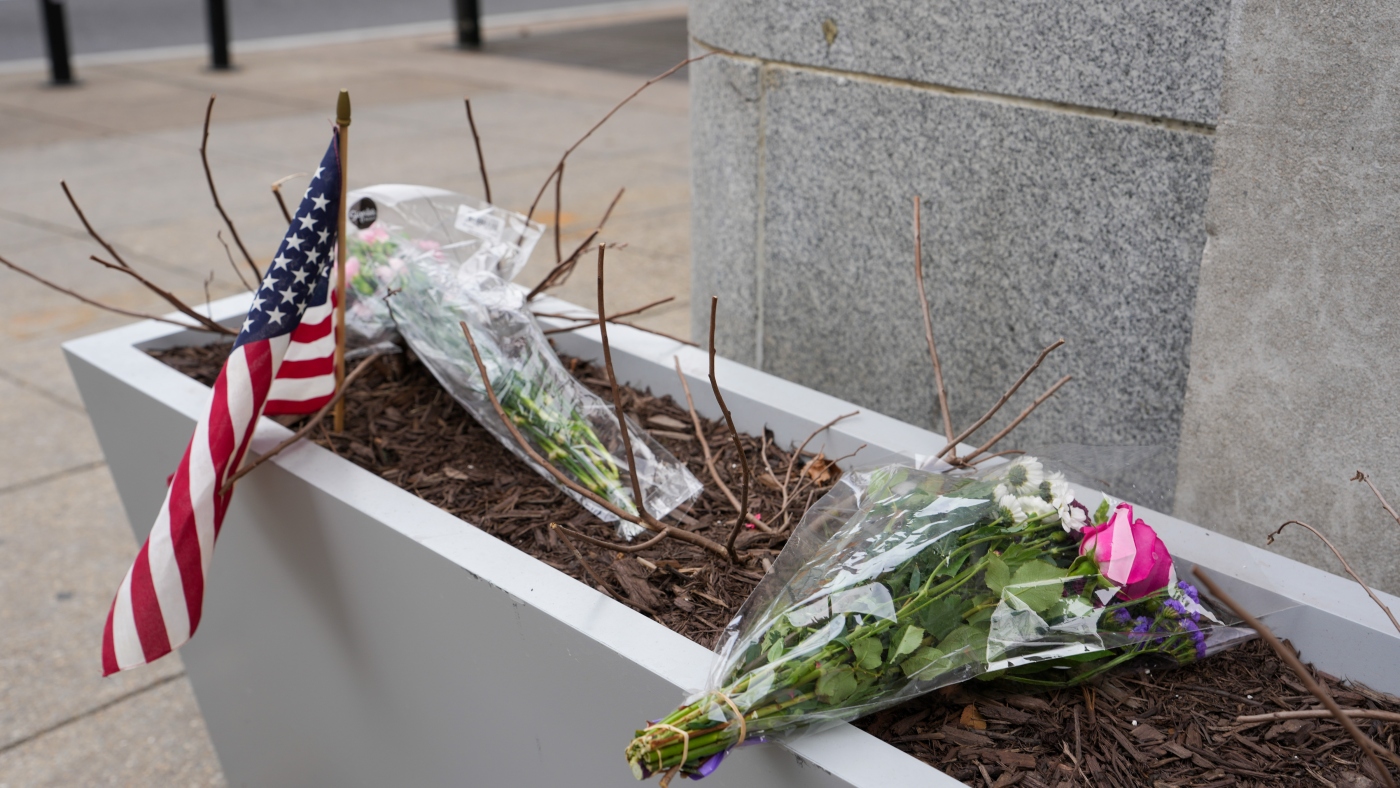Austin, TX
Central Texas holiday events kicking off soon

Holiday season events happening in Central Texas
The holiday season is here with some events kicking off in Central Texas, and we’re getting a behind-the-scenes look at more that are set to roll out in the next couple of weeks.
AUSTIN, Texas – The holiday season is here with some events kicking off in Central Texas, and we’re getting a behind-the-scenes look at more that are set to roll out in the next couple of weeks.
“That’s generous and very kind of them, sweet of them to do it. God’s going to bless them for doing this,” says Maria, who attended the H-E-B Feast of Sharing dinner.
Thanksgiving came early with the 35th Annual H-E-B Feast of Sharing dinner at the Palmer Events Center. Free meals were passed out by volunteers, flu shots were made available, as well as free transportation to and from the event.
“We do 35 dinners across the state, and we serve over three. Over 300. Meals across the state and in Mexico. So today in Austin, we’re looking to serve 10,000,” says H-E-B Public Affairs Manager Tamara Jones.
While meals were being served, preparation started for the Christmas season in Austin.
This Friday, more lights are coming to the city with Mozart’s Lake Austin Festival of Lights. Celebrating four decades, the festival will operate for nearly six weeks.
The dazzling light displays last two and a half hours from 5-10 p.m., and it ends on January 4. Ticket prices are $5 for those ages 12 and up.
The countdown is also underway for the 60th year anniversary of the city of Austin’s Trail of Lights. Gates open on December 10 and close on December 23.
There are more than two million lights, 90 holiday trees and more than 70 holiday displays along the nearly one-mile stretch.
“We have got some new things this year as well for our opening night. We have got a drone show, that will happen four times on opening night. We have got a lot of new photo activations that are happening as well throughout the trail that you will be able to see,” says Executive Director of Trail of Lights Foundation James Russell.
The first seven nights are free, and the remaining seven nights will cost $8 per ticket. Those ages 11 and under are free. The trail opens from 7-10 p.m. with a line-up of live entertainment and activities.
“We have a ferris wheel, a carousel, and plenty to eat, so bring an appetite we have different vendors. You can buy Trail of Light merch,” says Trail of Lights Foundation Board member Enrique Duran.
This holiday season, the Kyle Police Department is warning residents to watch out for porch pirates with a popular Christmas character, the Grinch.
It’s the third year of the public service announcement, and the first year the department will host a Grinch on the Green event with live music, vendors, a Grinch movie screening and photos with the Grinch.
The Grinch on the Green event is free and will be held Saturday, Dec. 7, from 5:30-9 p.m. at La Verde Park.
The Source: Information from interviews conducted by FOX 7 Austin’s Tan Radford

Austin, TX
Texas vs. Texas A&M rivalry reignites excitement among fans tailgating for game

AUSTIN, Texas — The excitement around the Texas vs. Texas A&M game returned to the 40 acres this weekend. After students camped outside the stadium to secure prime seats, the tailgate lots were full up with Longhorns and Aggies fans alike.
“Go Horns!” exclaimed Darrick Price from UT Tailgaters, celebrating the reunion with “little brother.” Laura McWha, a Texas A&M fan, added, “WHOOP!!” as Aggies traveled from College Station for the game.
Price noted, “It feels amazing. We’re so happy that little brother’s back in town.” The rivalry, restored last year, has friends and family rooting against each other in what is the biggest home game for Texas this year. “I have a senior now who’s considering which school he wants to go to, and I just think it means everything for this city,” Price said.
PREVIOUS COVERAGE| Longhorns vs. Aggies tickets soar as fans prepare for epic showdown
McWha expressed confidence, saying, “We’ve been doing great this season….We’re gonna show what we’ve got.”
This was about as fiery as the smack talk got today as fans enjoyed communing with their frenemies in the lots.
Lanece Marley, another A&M fan, shared, “I think it’s wonderful. We love coming. We love celebrating with these guys.”
Hannah Morgan, an Austin-native and Aggie grad, reflected on her divided household, saying, “Oh yes I know what it means. It means everything to us.” With a father and brother who went to UT-Austin, Morgan says she successfully converted her mother over to rooting for the Aggies. Morgan also anticipated the game, stating, “I think it’s going to be really sweet to get revenge… to beat them at home would be a big deal for us.”
Texas won last year’s matchup in College Station, which was the first meeting between the two schools since 2011.
Austin, TX
Texas A&M Corps of Cadets carrying the Lone Star Showdown game ball to Austin

COLLEGE STATION, Texas (KBTX) – Football is a big tradition on Thanksgiving Day, and while the Aggies didn’t play, the Texas A&M Corps of Cadets were helping the team get ready by going on a journey to Austin.
Around 80 members of the corps gathered at a lot near Kyle Field at 7:30 p.m. on Thanksgiving Day, where they would begin a 100-mile relay-style event. Broken up into teams, they’ll run to the Corps’ march staging area in Austin, escorted by police, with the plan to be there by 11 a.m.
From there, they will march in with the fightin’ Texas Aggie Band to finish the delivery.
“The goal of this is to be able to inspire the next generation of Aggies and to be able to encourage the entire campus. The entire Aggie network is brought together because we, as the Corps, were inspiring and helping our Aggie team, the football team, as they get ready to take on Texas,” said Carson Seiber, a member of the Texas A&M Corps of Cadets and event coordinator.
Seiber said since he was a freshman who learned A&M would be playing Texas in Austin his senior year, it was his dream to bring back the tradition that he said started over two decades ago.
“I had this dream, and I kind of talked to people, and now that it’s my senior year, I really had an idea about why not bring the tradition back, why not kind of leave a mark, leave a legacy on the Corp and Texas A&M that hasn’t really happened in a long time,” Seiber said.
The plan really finalized itself about a week ago, but was pitched two months ago. He said what really separates Texas A&M University from every other school is its core values.
“I think it’s been really cool to see the fact that when the Aggies are successful, we see our Aggies support each other, but also in times when are Aggies have not been good at football or tragedies like bonefire, our Aggies are there in victory or defeat,” Seiber said.
The Aggies will take on the Texas Longhorns tomorrow at 6:30 p.m.
Copyright 2025 KBTX. All rights reserved.
Austin, TX
Taylor residents sue to halt proposed data center

TAYLOR, Texas — A proposed data center in Central Texas is getting a lot of pushback from residents. Approximately 40 minutes north of Austin, a group of neighbors in the city of Taylor sued the data center. They are pushing back against the data center that could soon be under construction roughly 500 feet from their neighborhood.
“This property is supposed to be deeded for parkland,” said Pamela Griffin, a resident in the neighborhood next to where the data center will be built. “This land was given to this community.”
The 87-acre land near Griffin’s community is embroiled in a legal battle between her and Blueprint Data Centers.
“We do not need a data center,” Griffin said. “I’m not against them, but we don’t need them in our community.”
Despite Griffin’s land deed lawsuit, a Texas judge has ruled in favor of the proposed project.
“When a judge dismisses a lawsuit because the plaintiff or the plaintiffs lack standing, what the judge means is you’re not a person who has the legal authority to bring this lawsuit,” said Mike Golden, a law professor at the University of Texas at Austin.
Griffin and other neighbors argue the data center will take away natural resources like water and what was supposed to be the future site of a park, so her fight is not over.
“We are going to the appellate court now,” Griffin said. “We did file.”
Griffin is passionate about advocating for the community because it’s the neighborhood she was born and raised in. Her grandmother bought property there in the early 1960s, and the community became a safe haven for Black people in Taylor.
“We weren’t allowed to be in the city limits at that time because they would not sell to the Black and brown community, so my grandmother realized they had to buy land outside,” she said.
She worries about the future of her small community now that construction of a 135,000-square-foot data center will begin within the next year.
It’s a project the city says will bring millions in revenue to Taylor.
“What data centers do to a community is it brings an influx of new revenue to all the taxing entities, including the city, the county and especially the school district,” said Ben White, the president and CEO of the Taylor Economic Development Corporation.
He explained how the revenue might benefit the city.
“City council will have the ultimate say on how those revenues are spent, but it could involve new parks for citizens, improve streets for the citizens, improve programs for the citizens,” he said. “There’ll be a lot of variety of different uses of those funds the council could decide to use them on.”
White also addressed the controversy surrounding the deed when asked about it by Spectrum News.
“We feel comfortable that EDC, we did everything correctly on our side,” he said.
Griffin now awaits the Third Court of Appeals to decide on her case.
“I’m asking for the community and the Taylor people to stick together and understand my fight against this data center coming into our community,” Griffin said.
-

 Science7 days ago
Science7 days agoWashington state resident dies of new H5N5 form of bird flu
-

 World1 week ago
World1 week agoPoland to close last Russian consulate over ‘unprecedented act of sabotage’
-

 News1 week ago
News1 week agoAnalysis: Is Trump a lame duck now? | CNN Politics
-

 World1 week ago
World1 week agoZelenskiy meets Turkish president as word emerges of new US peace push
-

 Business4 days ago
Business4 days agoStruggling Six Flags names new CEO. What does that mean for Knott’s and Magic Mountain?
-

 New York1 week ago
New York1 week agoDriver Who Killed Mother and Daughters Sentenced to 3 to 9 Years
-

 World1 week ago
World1 week agoUnclear numbers: What we know about Italian military aid to Ukraine
-

 Politics1 week ago
Politics1 week agoMamdani keeps Jessica Tisch as NYPD commissioner




















